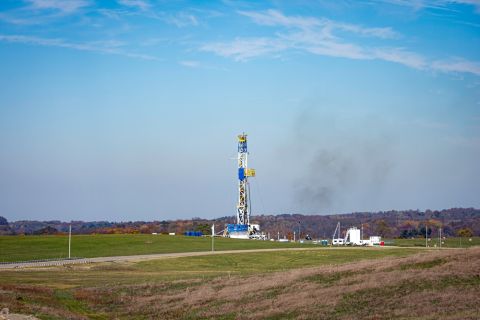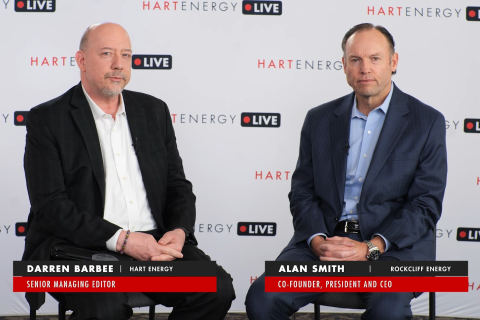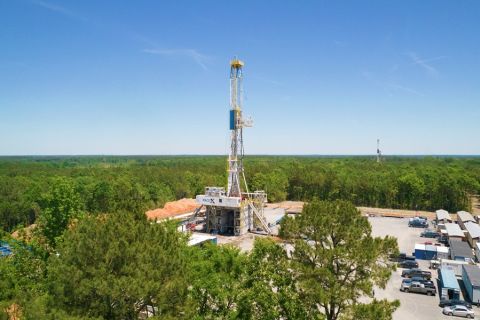Presented by:

Editor's note: This article appears in the special OTC edition of the E&P newsletter. Subscribe here.
As society transitions to renewables, oil and gas will be a crucial part of the energy mix for years to come. The offshore industry has an important role to play in producing this resource; however, its very license to operate hangs in the balance due to climate change. To meet current and future energy demand, the industry must find ways to address its carbon footprint while ensuring returns-focused performance amid a more volatile long-term market outlook.
Decarbonizing operations
Schlumberger has committed to a decarbonization plan that will not only address its own operational impact but also its customers’ Scope 1 and 2 emissions through its Transition Technologies portfolio. This portfolio aims to enable more sustainable operations for Schlumberger’s customers while simultaneously driving efficiency, reliability and performance. A key theme of this portfolio is electrification of infrastructure.
Electrification means sustainability benefits at multiple levels, such as enabling access to lower carbon energy sources, reducing footprint by maximizing the use of existing infrastructure, aligning with platform electrification goals and improving granularity and precision of system controls.
Convergence of digitalization and electrification
In recent years, a great deal has been done to make operations more efficient through leveraging digital and data-driven solutions, but digitalization is only one part of the story.
To realize maximum performance and sustainability benefits, digitalization and electrification must converge from sandface to topside. When fully realized, all-electric systems will provide operators with real-time, in-context data insights from embedded sensing in a single wire, or wireless, distributed downhole network to enable more dynamic precision control and automation capabilities across the infrastructure.
System integration is a key enabler to unlocking these benefits. Many complex interfaces exist between the sandface, subsea and topside. If not properly integrated, this can disrupt end-to-end system functionality. Because of this, operators can benefit from working with a full-scope supplier that has a full range of technology and expertise to deliver a seamlessly integrated system.
A compelling justification for electrification
With all-electric production systems, the size of the overall subsea infrastructure can be optimized. Electric umbilicals are simpler to manufacture, resulting in lower costs, reduced lead times and a lower carbon impact.
Long-distance power transmission using electricity is significantly more efficient compared with hydraulic power. Removing hydraulic fluid for actuation eliminates the risk of discharging hydraulic fluid into the environment while addressing hydraulic pressure safety issues.
Electric systems reach further than hydraulic ones. Electrification enables more producing zones in the same well than hydraulic systems; hence fewer wells are needed to achieve the same reservoir contact. This saves well construction costs, reduces time to commissioning and enables operators to reduce their CO2 emissions by reducing drilling time and overall well footprint.
At the topside, electric systems transfer power directly to the point of use, eliminating hydraulics conversion on deck. This reduces space and weight, requires fewer maintenance crews and saves fluids costs.
Making all-electric systems a reality
Schlumberger has been involved with all-electric systems for decades, from its first all-electric downhole flow control valve developed in 1998 to the first all-electric subsea tree installed in 2008. Since 2014, more than 50 all-electric flow control stations, connected to Schlumberger's Manara production and reservoir management system, have been deployed and continuously operated.
To help operators achieve optimal performance and sustainability, Schlumberger has a wide portfolio of sandface and completion electric technologies, subsea production systems, subsea and topside processing and digital workflows. These, combined with streamlined execution, enable the company to offer a full-system approach that delivers true end-to-end system functionality.
All-electric systems are a key part of Schlumberger’s efforts to develop technology that improves sustainability and performance. Whether a single or full system, from sandface to topside, all-electric systems can help operators reduce their Scope 1 and 2 emissions by optimizing well footprint, increasing efficiencies and minimizing environmental impact from hydraulic leakage.
Recommended Reading
Which Haynesville E&Ps Might Bid for Tellurian’s Upstream Assets?
2024-02-12 - As Haynesville E&Ps look to add scale and get ahead of growing LNG export capacity, Tellurian’s Louisiana assets are expected to fetch strong competition, according to Energy Advisors Group.
From Tokyo Gas to Chesapeake: The Slow-burning Fuse that Lit Haynesville M&A
2024-03-01 - TG Natural Resources rides the LNG wave with Rockcliff deal amid shale consolidation boom.
Ohio Oil, Appalachia Gas Plays Ripe for Consolidation
2024-04-09 - With buyers “starved” for top-tier natural gas assets, Appalachia could become a dealmaking hotspot in the coming years. Operators, analysts and investors are also closely watching what comes out of the ground in the Ohio Utica oil fairway.
Exclusive: Rockcliff CEO on $2.7B TGNR Deal, Value of Haynesville M&A
2024-04-10 - Rockcliff Energy CEO and President Alan Smith discusses the ups and downs of executing the transaction with TG Natural Resources and what's on the Rockcliff III radar, in this Hart Energy Exclusive interview.
An Untapped Haynesville Block: Chevron Asset Attracts High Interest
2024-04-03 - Chevron’s 72,000-net-acre property in Panola County, Texas is lightly developed for the underlying Haynesville formation — and the supermajor may cut it loose.





